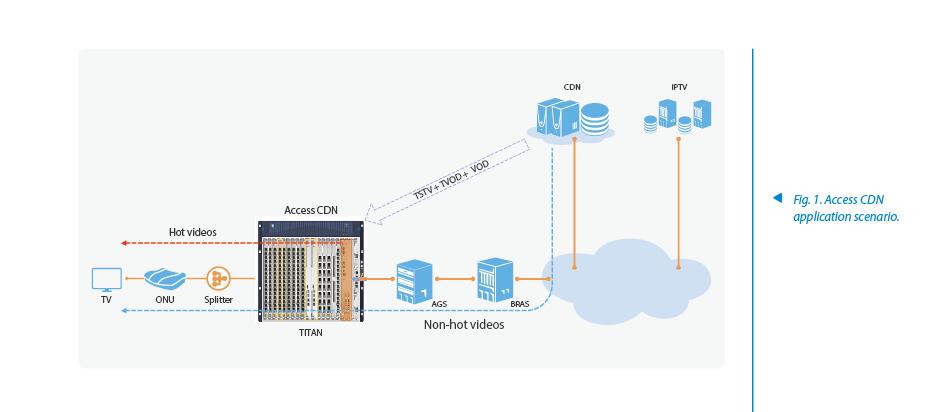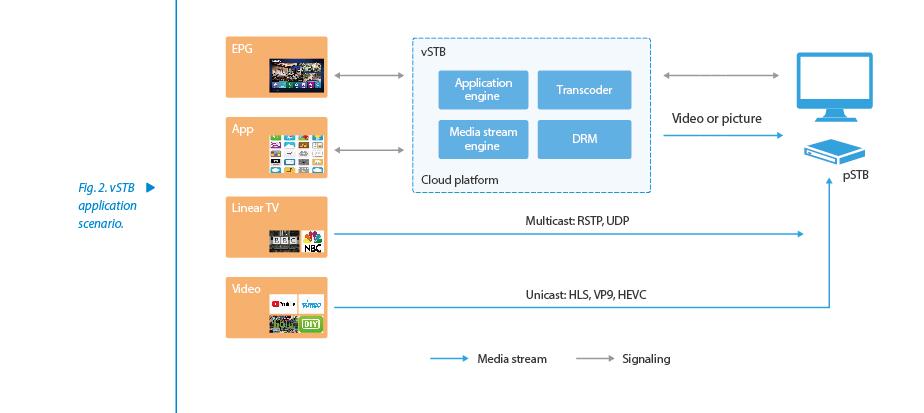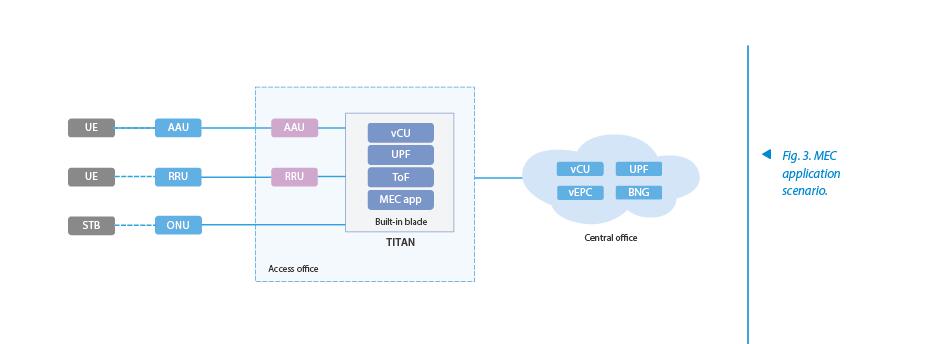Light Cloud: Building a Converged Access Office to Enable Experience-Sensitive Services
The emergence of new services and technologies including big video, 5G, and SDN/NFV poses unprecedented requirements and challenges to access networks. In the 5G era, the explosion of data traffic calls for more network bandwidth and resources while also turning big video into a basic broadband network service. Big video is a typical experience-sensitive service that has high requirements for latency, packet loss and jitter. The content distribution and computing functions can be deployed in the access network to enable experience-sensitive services, relieve pressure on upper-layer networks and cut transmission costs. In addition, network function virtualization infrastructure (NFVI) can be introduced to the access network to support edge network clouds and edge service clouds. With NFVI, operators can implement virtual network functions (VNFs) on the access network and alleviate the pressure on the edge data centers.
Pushing edge computing to the access layer and enabling NFV-based access network require the access office (AO) to be transformed by introducing computing and storage resources and installing additional equipment. Aside from leading to AO space constraints, the transformation also incurs a high cost, takes a long period, and needs considerable manpower. With the expected benefits of NFV and edge computing still uncertain, operators lack the motivation to initiate the transformation. That makes embedding blade servers in access devices a more feasible approach because it can introduce computing and storage capabilities as desired and support NFV-based access network without transforming the AO or adding extra space.
ZTE and Intel jointly launched the Light Cloud solution at the Mobile World Congress (MWC) in February 2019. The solution loads creatively computing and storage capabilities on telecom access devices, bringing services closest to users. This satisfies the needs for deploying and distributing experience-sensitive services while driving down the costs. The Light Cloud solution has three characteristics:
—Space savings. The 300 mm built-in blade server can be mounted in an OLT to fully use existing AO resources. No extra space is needed, and no AO transformation is required.
—Low power consumption. The power of a blade server is less than 200 W, which is 50 percent lower than that of a standalone server and hence saves Opex.
—Strong performance. The blade server uses the latest 16-core SoC CPU and provides 15 TB SSD storage, 30 Gbps content processing and 256 GB memory.
ZTE's flagship next-generation optical access platform, TITAN, supports the deployment of Light Cloud. As the industry's first fully distributed platform based on a high-end router architecture, TITAN supports access technologies from 10G-PON to 50G-PON and enables fixed-mobile convergence (FMC). Its high performance offers strong platform guarantee for Light Cloud applications.
As an enabler of multi-service edge computing (MEC), Light Cloud implements VNFs in the FMC scenario to ensure network performance and QoS, reduce the pressure on the edge data centers, and allow for the deployment of experience-sensitive services. Light Cloud can serve as Access CDN that supports high-traffic, low-latency video services to improve user experience. It can also act as NFVI to implement virtualized applications like virtual set top boxes (vSTBs) and virtual customer premises equipment (vCPE). Light Cloud employs a general computing and storage platform that can be either used by operators themselves or leased to third parties as an open infrastructure to offer more possibilities for service development.
Access CDN: Offloading Video Traffic Locally for Resource Savings
Video has become the basic broadband network service, accounting for 80 percent of network traffic. The increase in video traffic consumes a large number of backbone network resources and puts a heavy burden on operator networks. According to the analysis and statistics, most of video contents on the web are repeatedly transmitted, especially hot videos that may form a large amount of repeatedly transmitted traffic from the video source to users in a short time. The repeatedly-transmitted video contents, including time-shifted TV (TSTV), TV on demand (TVOD) and video on demand (VOD), are stored in edge nodes of a content delivery network (CDN). If the edge nodes are located at the core router (CR) or BRAS side, which is far from users, the repeatedly-transmitted traffic will take up a large amount of uplink OLT port, OTN, BRAS, and CR port resources. The Light Cloud solution allows the CDN to be deployed in the built-in blade servers of the OLT in the AO, where it serves as an Access CDN to deliver video services, as shown in Fig. 1. In the Light Cloud solution, one blade server offers a storage capacity of up to 15 TB and a processing capability of 30 Gbps. The calculation shows that when the CDN is deployed at the CR side and the VOD traffic is higher than 3 Gbps, the CR-OLT two-level CDN architecture is more cost-effective than the CR one-level CDN architecture. When the CDN is deployed at the BRAS side and the VOD traffic is higher than 6 Gbps, the CR-BRAS-OLT three-level CDN architecture is more cost-effective than the CR-BRAS two-level CDN architecture.

Users' ever stricter demand for video experience and the increasing number of value-added services offered via STBs impose higher and higher requirements on the software and hardware capabilities of STBs. STBs that have been in service for a long time cannot meet the requirements of new services and must be replaced. STBs that were deployed not long ago need frequent software upgrade to accommodate new services. Because the STBs come in numerous models and have vastly different hardware capabilities, their online upgrade and new service tests take a long period of time. That in turn slows down the go-live process of new services. To address the challenges faced by operators, ZTE has launched the vSTB solution to decouple some functions of the existing STB onto the cloud. After the decoupling, the physical STB (pSTB) implements encoding/decoding, UI presentation, and simple key operations, while vSTB performs UI/app processing, virtual services, and dynamic resource allocation. vSTB enables fast STB service deployment and upgrade. Services are only interconnected once on the cloud without the need to adapt to in-service STBs of different vendors. The services are upgraded on the cloud and take effect in real time. There is no need to wait for the upgrade of existing STBs. The compatibility between old and new STB versions is not required, which greatly extends the lifecycle of the STBs. By deploying vSTB on the built-in blade server of OLT, operators can deliver cloud-based STB services while minimizing network latency (Fig. 2).

In the 5G era, the deployment of experience-sensitive services such as VR/AR, internet of vehicles, automatic driving, and industrial control demands that networks have their service capabilities optimized, content pushed near the users, and latency lowered. The trend to deliver services close to users gives rise to MEC. Meanwhile, building a converged AO that is shared by such devices as 4G baseband units (BBUs), 5G distributed units (DUs), and OLTs is now preferred by most mainstream operators. The converged AO must have the NFVI necessary for deploying MEC applications. The Light Cloud solution provides an economical and fast way of constructing NFVI in the AO. All VNFs and MEC applications can be deployed in Light Cloud on demand to form a dynamic, efficient edge computing system (Fig. 3).

ZTE's Light Cloud solution innovatively integrates IT and CT in the access network, simplifying network construction and AO transformation. It can not only meet the requirement of edge computing in the fixed network, but also provide computing and storage resources for nearby mobile services. The solution expands application scenarios of the access network and gives it new capabilities.